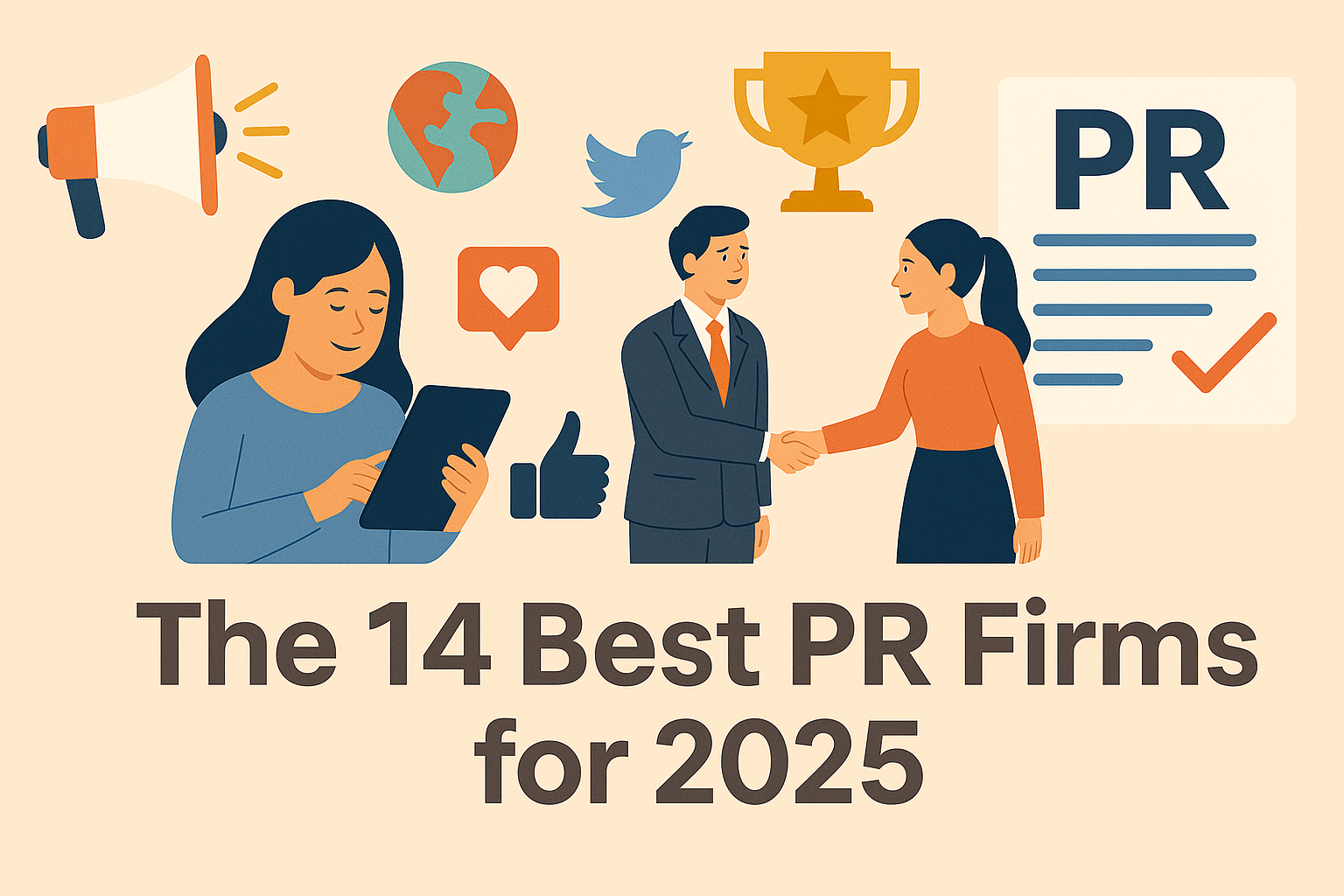B2B PR operates in a distinct realm, where the target audience is composed of businesses, key decision-makers, and industry stakeholders. It revolves around fostering trust, credibility, and thought leadership in an environment where building and maintaining relationships hold the key to success.
When it comes to accelerating the sales cycle, PR can be a game-changer for businesses of all sizes. Leveraging earned media placements—such as positive coverage and mentions in reputable publications—can have a profound impact on moving prospects through the buyer’s journey faster and more effectively.
As the business landscape continues to evolve, so does the approach to B2B PR. Embracing digital technologies, understanding the importance of data, and integrating innovative strategies are critical for any successful B2B PR campaign.
What is digital PR?
Digital PR, in essence, is an extension of traditional public relations into the online realm. While traditional PR primarily relies on print and broadcast media, digital PR focuses on using various online channels to communicate with target audiences. These channels may include websites, social media platforms, online news outlets, blogs, podcasts, email newsletters, and influencer marketing platforms.
The main goal of digital PR remains the same as traditional PR: to build and maintain a positive reputation for a brand or organization. However, digital PR introduces a digital twist by incorporating the benefits of the online world, such as wider reach, real-time interactions, and data-driven insights.
Staying Updated on PR Trends
PR trends continually shape the landscape in which businesses operate, influencing consumer behavior, media preferences, and communication channels. Embracing and adapting to these trends can provide B2Bs with numerous benefits and opportunities to excel in their industries. Here’s a look at the value of staying updated on PR trends:
- Maintaining Relevance and Competitiveness: In the fast-paced business environment, industries can undergo significant changes within a short period. Staying abreast of PR trends helps B2Bs remain relevant and competitive. By incorporating the latest PR strategies and tactics, businesses can better engage their target audience, enhance brand perception, and differentiate themselves from competitors.
- Connecting with the Right Audience: PR trends often center around the changing preferences and behaviors of target audiences. By understanding these shifts, B2Bs can tailor their communication efforts to resonate with their audience effectively. Whether it’s utilizing social media, personalized content, or interactive experiences, staying updated on trends ensures that businesses connect with their audience on a deeper level.
- Maximizing Media Opportunities: The media landscape is constantly evolving, with new platforms and channels emerging regularly. Staying informed about PR trends allows B2Bs to identify relevant media opportunities and leverage them to gain visibility and positive media coverage. Whether it’s through traditional media outlets, industry influencers, or digital publications, businesses can capitalize on the right media platforms to reach their desired audience.
- Crisis Preparedness: PR trends encompass crisis communication strategies as well. Being aware of the latest approaches in crisis management enables B2Bs to develop robust plans to address potential challenges effectively. This readiness can help mitigate reputational damage and instill confidence in stakeholders during turbulent times.
- Innovation and Creativity: PR trends often introduce innovative ways to engage audiences and tell a brand’s story. By staying updated, B2Bs can tap into creative concepts, unique content formats, and emerging technologies that add novelty and excitement to their PR campaigns. Innovative approaches can capture attention and leave a lasting impression on stakeholders.
- Measuring and Analyzing Impact: PR trends often emphasize the importance of data-driven decision-making. B2Bs that keep abreast of these trends can leverage analytics and metrics to measure the impact of their PR efforts accurately. This data-driven approach allows organizations to assess their ROI, identify successful strategies, and fine-tune their campaigns for optimal results.
- Thought Leadership and Industry Authority: Following PR trends also enables B2Bs to position themselves as thought leaders and industry authorities. By aligning their brand with current topics and emerging trends, businesses can demonstrate expertise, provide valuable insights, and attract a loyal audience seeking authoritative information through thought leadership articles.
Long-tail PR for B2Bs
In the fast-paced world of tech startups, success often hinges on the ability to create a lasting impact in a crowded market. While some may be tempted to take a page from Netflix’s playbook, aiming for one-off, massive hits to make a splash, there’s a more strategic approach that can yield powerful and consistent results – the long-tail strategy.
So, what exactly is a long-tail strategy? Unlike the traditional approach of focusing solely on a few big hits, the long-tail strategy capitalizes on niche creators and outlets to generate a groundswell of steady and consistent coverage. By investing in a diverse array of opportunities, both big and small, tech startups can gradually build their brand and presence, much like YouTube did with its billion-dollar success.
Netflix, with its deep pockets and vast resources, is known for producing blockbuster Tier 1 hits that capture global attention. While this strategy can certainly create a massive splash, it also comes with high risks. Relying on a few big hits means that the success of the entire venture is tied to the performance of those select titles. If one of them fails to resonate with the audience, it can significantly impact the company’s bottom line and reputation.
In contrast, YouTube has mastered the art of the long-tail strategy. Rather than focusing solely on a few high-profile creators or content, YouTube provides content for virtually every query and caters to a wide range of interests. This approach allows them to capture the attention of diverse audiences, ensuring that there is something for everyone. By investing in both established creators and up-and-coming talent, YouTube creates a groundswell of content that attracts viewers consistently, establishing the platform as a go-to destination for virtually any topic.
Embracing a diversified approach that engages with niche creators and outlets can help tech startups build a powerful and influential brand presence over time. By saying yes to opportunities—both big and small—startups can foster a groundswell of consistent coverage and put themselves firmly on the map of their target markets.
Evolution of Event Marketing
With technological advancements, changing consumer behaviors, and global events shaping the way we gather and connect, event organizers have been navigating through a dynamic landscape like never before.
Gone are the days of traditional events where attendees were merely passive observers. Today, event marketing revolves around creating immersive, interactive, and memorable experiences that cater to the diverse preferences and expectations of modern audiences. Whether it’s a virtual conference, a hybrid event, or an in-person gathering, ensuring an unforgettable experience for attendees has become pivotal for event organizers to achieve their goals and deliver real value to participants.
To achieve success in this new event marketing landscape, you must be adaptable. Event organizers must be agile and willing to embrace change, responding swiftly to emerging trends and feedback from attendees. By prioritizing attendee experience and staying attuned to their needs, event organizers can create events that resonate with audiences and stand out in a competitive marketplace.
When it comes to event PR, here are our three biggest tips:
1. Focus on the BEFORE and AFTER press buzz.
Event PR is not solely about generating buzz during the event itself; it’s about building anticipation before the event and sustaining momentum afterward. To achieve this, start your PR efforts well in advance of the event. Utilize press releases, media outreach, and social media teasers to create excitement and generate curiosity among your target audience. Highlight key speakers, innovative sessions, and unique experiences that attendees can look forward to.
After the event, capitalize on the post-event buzz by sharing impactful event highlights, attendee testimonials, and key takeaways. Post-event press releases and media coverage can extend the event’s reach and maintain engagement with your audience even after they’ve left the venue. By focusing on the before and after press buzz, you can create a cohesive narrative that adds value and significance to your event.
2. Be ready to speak to an international audience.
In today’s interconnected world, events often attract attendees and media from across the globe. As a result, your event PR strategy should be tailored to cater to an international audience. Ensure that your press materials, website, and promotional content are available in multiple languages to accommodate diverse attendees and media representatives.
Additionally, consider conducting interviews and panel discussions with speakers and thought leaders in various languages to reach a wider audience. Engaging with international media outlets and influencers can boost your event’s visibility on a global scale. Being ready to speak to an international audience demonstrates inclusivity and fosters a sense of connection with attendees from diverse backgrounds.
3. Think outside the booth—there are lots of creative ways to make an impact on your audience.
While traditional booths and exhibition spaces are essential for event presence, don’t limit your PR efforts solely to the exhibition floor. Explore innovative and creative ways to make a lasting impact on your audience. Host exclusive pre-event media briefings or post-event networking receptions to engage with journalists and industry influencers. Organize live-streamed interviews or interactive sessions with event speakers to attract virtual attendees and increase online engagement.
Leverage augmented reality (AR) or virtual reality (VR) experiences to provide an immersive and memorable journey for attendees. Additionally, consider collaborating with event partners or influencers to co-create unique content or experiences that resonate with your target audience. Thinking outside the booth allows you to differentiate your event PR strategy and create a lasting impression on attendees and media alike.
In-House Team vs. PR Agency
The decision to build an in-house marketing team or work with external experts is a critical one that can significantly impact the success of your PR efforts. As B2B PR continues to evolve with new trends and strategies, it becomes essential for businesses to assess their budget, resources, and objectives to make an informed choice that aligns with their goals.
Having an in-house marketing team offers several advantages. It allows for seamless communication and coordination, a deeper understanding of the company’s products and services, and the ability to align PR efforts closely with overall marketing strategies. In-house teams can cultivate a strong company culture and work collaboratively with other departments, fostering a sense of ownership and commitment to the brand’s success.
An in-house team can effectively manage day-to-day PR operations and provide consistent support for ongoing marketing initiatives. They can adapt to the company’s needs quickly, respond promptly to emerging opportunities, and maintain strong relationships with industry stakeholders over time.
However, it’s crucial to consider the cost and resources involved in maintaining an in-house team. Hiring and retaining skilled PR professionals can be a significant investment, and the team’s workload may fluctuate depending on the ebb and flow of PR activities. Additionally, in-house teams may face limitations in terms of expertise, especially when it comes to specialized areas such as digital PR, data analytics, or influencer marketing.
Collaborating with a team of external PR experts can offer fresh perspectives, specialized skills, and access to cutting-edge strategies that may not be available in-house. External agencies or consultants bring a wealth of industry experience and a diverse range of contacts, which can be valuable for B2B companies seeking to expand their reach and influence.
Working with external experts provides flexibility and scalability, allowing businesses to access PR resources as needed without committing to long-term contracts or staffing requirements. This can be particularly beneficial for companies with fluctuating PR needs or those looking to launch specific campaigns or projects.
It’s essential to carefully choose the right external PR agency that aligns with your business goals and understands your industry niche. Effective communication and collaboration between the external team and internal stakeholders are key to achieving successful PR outcomes.
Amplify Media Coverage
While traditional PR may stop at getting media coverage, forward-thinking PR professionals understand that true success lies in maximizing the value of those press hits to create a lasting impact on brand visibility and credibility.
After securing a press hit, savvy PR professionals amplify its reach and longevity by sharing it across various social media platforms. This amplification not only increases the exposure of the coverage but also extends its shelf life, ensuring that the content continues to reach a broader audience over time. Social media shares allow brands to showcase their media mentions and reinforce the message to their followers, building credibility and trust.
Your website’s press page serves as a valuable hub for showcasing your media coverage and establishing your authority in the industry. After each press hit, PR professionals help businesses promptly update their press page to include the latest media mentions. This central repository of press coverage acts as a powerful portfolio of third-party validation, making it easier for visitors to see that your brand is credible and widely recognized by reputable media outlets.
One of the most significant advantages of media coverage is the third-party validation it provides. PR professionals recognize that leveraging press hits in sales outreach can be a powerful tool to seal the deal with prospects. Including media mentions in sales pitches, presentations, and B2B email marketing campaigns adds a layer of credibility to your brand and can boost confidence among potential customers. Prospects are more likely to trust a company that has been recognized and endorsed by reputable media sources, increasing the chances of converting leads into loyal clients.
The beauty of effective PR is that it creates a ripple effect. Each press hit acts as a stepping stone to secure more media coverage. As a brand gains visibility and credibility through media mentions, journalists and influencers take note, and opportunities for further coverage increase. PR professionals recognize this momentum and actively work to build upon it, pitching new stories and angles to keep the brand in the spotlight and maintain a steady flow of media attention.
Tap into Thought Leadership
Thought leaders are recognized as experts and authorities in their respective industries, and they play a crucial role in shaping industry conversations, trends, and innovations.
By positioning key individuals within your B2B organization as thought leaders, you gain credibility and trust among your target audience. This trust fosters a positive perception of your brand and helps potential customers feel confident in choosing your products or services.
Media outlets are always on the lookout for valuable, expert insights to share with their audiences. Thought leaders have the advantage of being sought after for interviews, expert commentary, and guest contributions to industry publications. This increased media visibility not only elevates your brand but also provides opportunities for positive media coverage and valuable exposure.
Thought leadership content, such as whitepapers, case studies, and research reports, can be potent lead-generation tools. By offering valuable insights and solutions through thought leadership content, you attract high-quality leads who are genuinely interested in your offerings. Additionally, thought leadership can influence decision-making, helping prospects move through the sales funnel more effectively.
Embracing thought leadership as a core element of your PR strategy enables you to guide industry conversations, build meaningful relationships, and position your brand as a trusted authority, ultimately propelling your business to new heights of success.
Be Media-Prepared
Whether it’s responding to media inquiries, pitching stories to journalists, or issuing press releases, media preparedness ensures that B2Bs make the most of every media opportunity that comes their way.
Media training equips key spokespersons within a B2B organization with the skills and confidence to handle media interactions effectively. This training prepares them to deliver clear, concise, and compelling messages that align with the brand’s objectives and values. Media-trained spokespeople are better equipped to answer challenging questions, handle sensitive topics, and stay on message during interviews. This fosters credibility and trust among journalists and the wider audience, ensuring that the B2B organization’s story is communicated accurately and positively.
Data-driven media pitches are crafted based on relevant industry data, market trends, and insights. These pitches go beyond generic press releases, showcasing the B2B’s expertise and thought leadership. By tailoring media pitches to align with journalists’ interests and needs, B2Bs can increase the likelihood of securing media coverage. Data-driven pitches demonstrate the B2B’s authority in the industry and provide journalists with valuable information, making them more likely to view the pitch as relevant and newsworthy.
A quality press release template forms the foundation of every media announcement. It ensures that essential elements, such as the headline, lead, key messages, and contact information, are presented in a clear and concise manner. A well-structured press release template enables B2Bs to effectively communicate their news, products, or achievements to journalists and media outlets. It also reflects the B2B’s professionalism and attention to detail, which can influence how the media perceives the brand.
Don’t Stop PR Efforts—Even in an Economic Downturn
The economic landscape is often marked by cycles of growth and contraction, leading to discussions about potential recessions. During such uncertain times, businesses may face tough decisions about their B2B marketing and PR strategies. While experts may debate the severity of a looming downturn, one thing is clear—panicking is not the solution. Instead, forward-thinking businesses can use this period as an opportunity to future-proof their operations and gain a competitive edge by focusing on their share of voice.
Amid the uncertainty, it’s crucial for businesses not to lose sight of their share of voice. Share of voice refers to a brand’s presence and visibility in the market compared to its competitors. During challenging economic times, some businesses may reduce their marketing and PR efforts as a cost-cutting measure. However, this approach can inadvertently cede market share to competitors and weaken a brand’s position in the minds of prospects.
Instead of succumbing to fear and cutting back, businesses can seize the opportunity to boost their share of voice during economic uncertainties. When competitors are scaling back their marketing and PR efforts, increasing your own visibility can create a powerful impact. By maintaining and even enhancing your PR and marketing initiatives, you can build and sustain trust among prospects, customers, and industry stakeholders.
Investing in PR and marketing during uncertain times is a strategic move to future-proof your business. The visibility and trust built through these efforts create a solid foundation for growth and market share expansion, both during and after the challenging economic period.
Ready to see these tips in action promoting your brand? Reach out.





